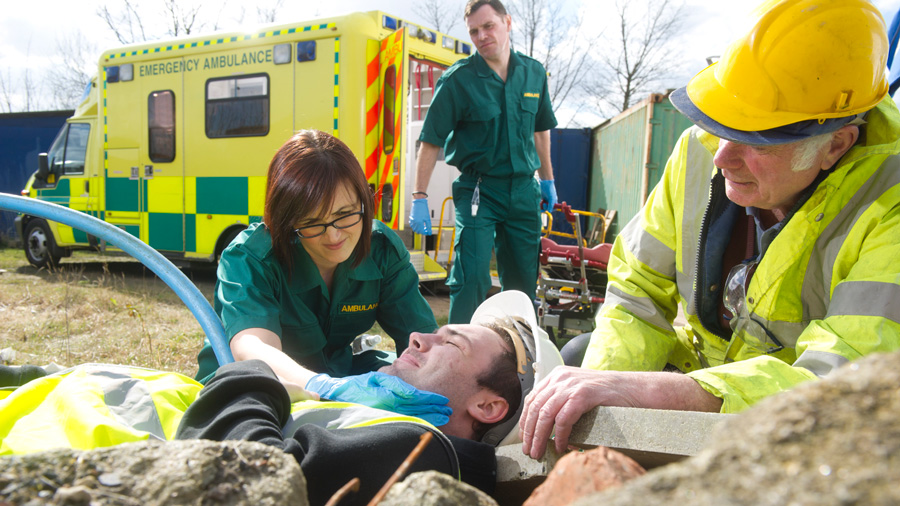Reducing Accidents at Work
Accidents and similar incidents at work always seem to come attached with the ‘not in my workplace’ attitude.
Even if one hasn’t occurred in your workplace as of late, it doesn’t mean that it isn’t occurring elsewhere.
For example; did you know that – in the year 2014/15 – approximately 687,000 injuries occurred at work, according to data from the Labour Force Survey? This equates to 27.3 million working days lost due to work-related illness and workplace injury, and £14.3 billion for the estimated cost of injuries and ill health. On top of all this, 1.2 million working people suffered from a work-related illness; one of the greatest culprits being stress.

Shockingly, 142 workers were killed at work in this year, whilst 2,538 died from mesothelioma; a terminal form of cancer caused by the inhalation or ingestion of asbestos fibres.
With all of this doom and gloom in mind, it’s important to take as many steps as possible to reduce the amount of accidents that occur/could occur within your place of work.
Tips and tricks on reducing accidents
The measures you’ll have to take to improve health and safety in your workplace will vary greatly depending on where it is you work, and what your field of work is. For example; you’d have different risks in an office filled with computers than you would on a construction site.
Because of this, we can only offer you a general guide, the tips and tricks in which will most likely apply to most workplaces.
Make it all clear
As an employer (and as an employee), it’s important to encourage and promote health and safety in the workplace. After all; if you don’t think health and safety is important, why should your staff or co-workers?
Hopefully you have a good health and safety policy set in place (if not, it’s essential that you get to it). You should do your utmost to make this policy readily available and clear to all staff; be it that you have it displayed on a staff notice board, or that you have a review of it with all of your staff every month.
The latter is also a good way of hosting a brainstorming session regarding anything new that may need to be added to the policy. For example; if you get a new piece of machinery in, host a review where the risks surrounding the machine can be discussed, and what can be done to avoid any dangers.
As well as making your health and safety policy clear, it’s important that any health and safety signs you have dotted around your workplace can be clearly seen by all staff/ members of the public; what’s the point in having them if they can’t be seen?
Training
There are so many courses available and it’s vitally important that you provide the necessary training for your staff. International Workplace offer lots of training courses, for example, the IOSH approved managing accidents and incidents eLearning course which is the perfect introduction into workplace accidents and incidents.
Training courses like this are vital to avoiding accidents and incidents in the workplace. By educating your staff you will help to reduce the chance of an incident and if something were to happen they would be in a better position to deal with the issue.
Keep it correct
A large portion of accidents are caused due to employees not having the correct equipment readily available to them to do their job.
As well as ensuring that the equipment is correct and working properly, it’s also important to always try and purchase the latest equipment.
For example; using old-fashioned safety gloves could mean that they don’t work as well with more modern equipment, meaning that the employees using them could very easily injure themselves.
If budget is a problem for you, look at it this way, would you rather invest in up-to-date safety equipment, or fork out for an employee’s surgery?
You should always discourage employees from taking shortcuts to save time when it comes to safety, too; taking an extra day to finish a project is more important than an employee spending triple that amount of time in hospital because they injured themselves rushing.
Anything else?
As aforementioned, the steps you take to reduce accidents at work will vary massively depending on your industry or discipline; for any further advice on reducing accidents at work, we recommend contacting an injury or employment solicitor.
Unfortunately, it often goes that the consequences of not having a safe workplace aren’t often realised until they occur.
Failure to take action towards making your workplace safer (and often more efficient and productive!) can result in employees becoming a part of the grisly statistics that we mentioned at the start of the article – be it through illness, injury, or death.
With more and more technology being developed every day – that’s in regards to safety and the equipment used in the workplace – it’s vital that you keep yourself up to date with all things health and safety, before it’s too late.
If you have had an accident at work, your first port of call should be to contact a solicitor such as Blackwater Law. They’ll get on with all of the hard work, while you can focus on the most important thing, making a full and speedy recovery.
The IOSH approved Managing accidents and incidents course looks at how accidents and incidents happen and the financial, moral and legal reasons to reduce their impact. The course will also look at the reasons for reporting accidents and incidents, and the legal procedure for doing so.
We are the first provider on the market to offer IOSH approved short courses and have 11 currently available.
